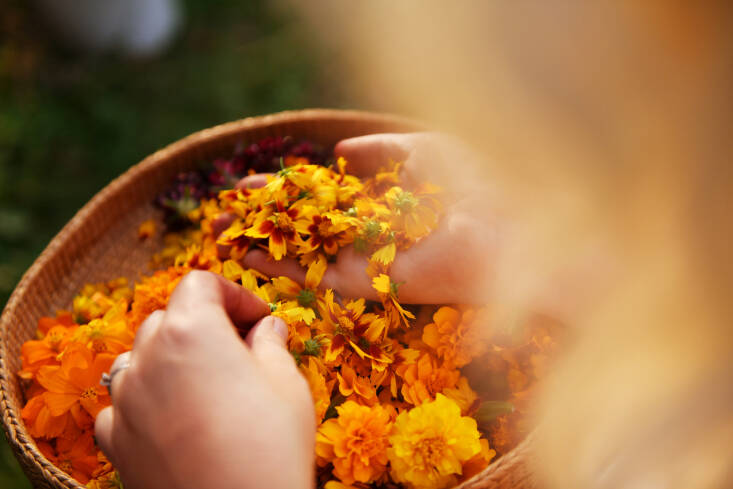In a town crackling with talented creatives of all types, Amanda de Beaufort stands out. Professionally known as Dyekween, Amanda is the textiles artist behind a_db_botanical color, a line of naturally dyed linens that has spawned collaborations with longstanding brands like Anthropologie and indie fashion label rag & bone.
When I first wrote about her burgeoning cottage industry in 2020 for Remodelista, she was extracting her dyes from store-bought produce (avocados, onions, etc.) or foraged plants. Today, Amanda makes her dyes mostly from plants she grows in a community garden in Maplewood, NJ, where she lives with her husband and two kids. “I wanted to have more control and consistency with my dyes. And the flowers in a dye garden are not typically available in stores,” she says.

You don’t need a large plot to start a dye garden. Amanda’s is just one bed. “Typically it’s a 1:1 ratio. You can use a cup or two of flower heads to dye one scarf,” she explains. To encourage more flowering, she fanatically deadheads. “I will cut all my flower heads off on Monday and Tuesday morning, they have all come back!” And what she doesn’t use right away, she dries: “Since I run a business using these plants, I aggressively dry and press flowers all summer to make sure I have enough for the winter.”
“I love gardening—there is something very satisfying about growing something you can use. And flowers are way easier to grow than vegetables!” Below, Amanda shares her five favorite long-blooming flowers to grow for a natural dye garden.
Photography by Claire Weiss of Day19.
Sulfur Cosmos

Pincushion Flower ‘Black Knight’

Marigolds

Coreopsis

Goldenrod

For more on Amanda’s line of naturally dyed linens, see:
To check out her kitchen remodel, see:
For more on natural dyes, see:












Have a Question or Comment About This Post?
Join the conversation (0)